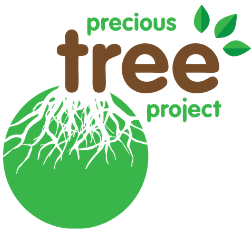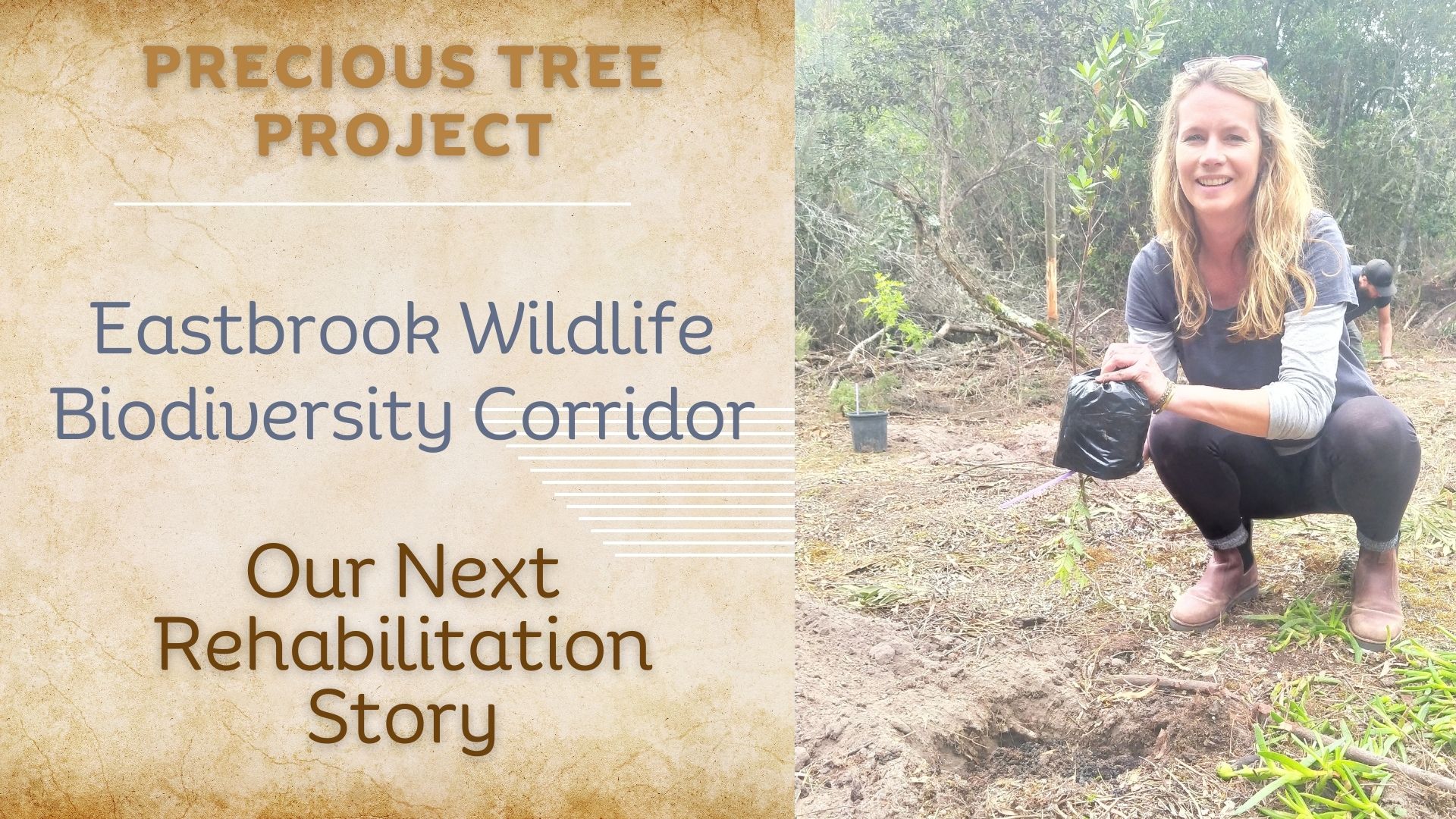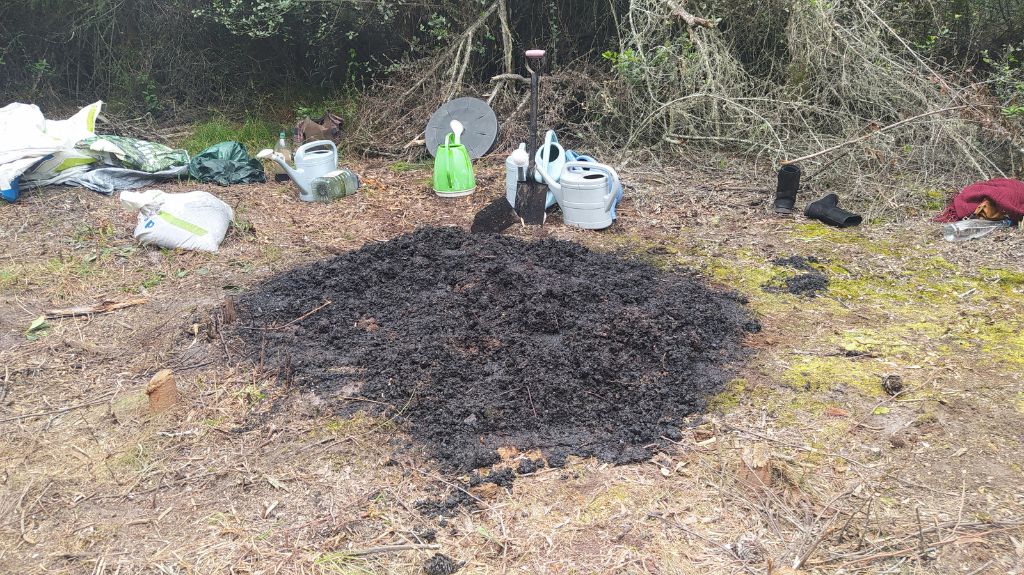
Wattle, pine, blackwood and gum are the predominant invasive species that have infested much of the region in which we operate. While wattle is a nitrogen fixer, invasive species such as pine and gum have more negative effects on the soil composition and consequently retard the regrowth of any endemic vegetation. Where pine and gum trees have pervaded an area, it is often necessary to regenerate the soil as part of the rehabilitation process, since natural soil regeneration post pine and gum removal can take many years. Time biodiversity in the area can ill afford…
Adding biochar in its activated form to the soil is a highly beneficial method to achieve good soil composition in which our indigenous trees can regrow and thrive. We were given a short talk and demonstration by Kevin Clack, at one of our tree planting sessions in the Eastbrook Corridor, where he gave us a demonstration on Activated Biochar and highlighted the numerous benefits of using biochar: improvement of soil structure and fertility, enhanced water absorption around the root bowl, carbon sequestration.
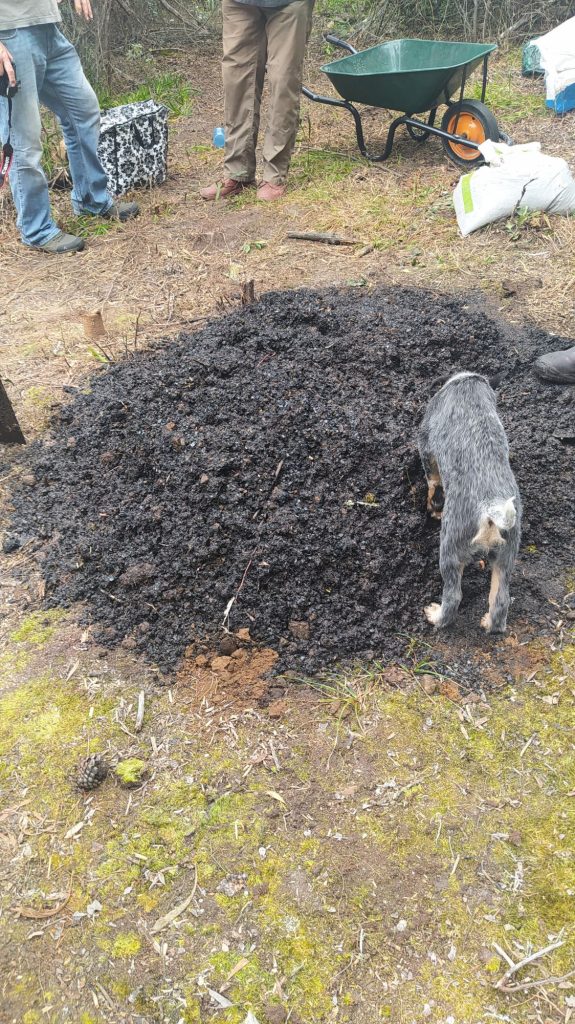
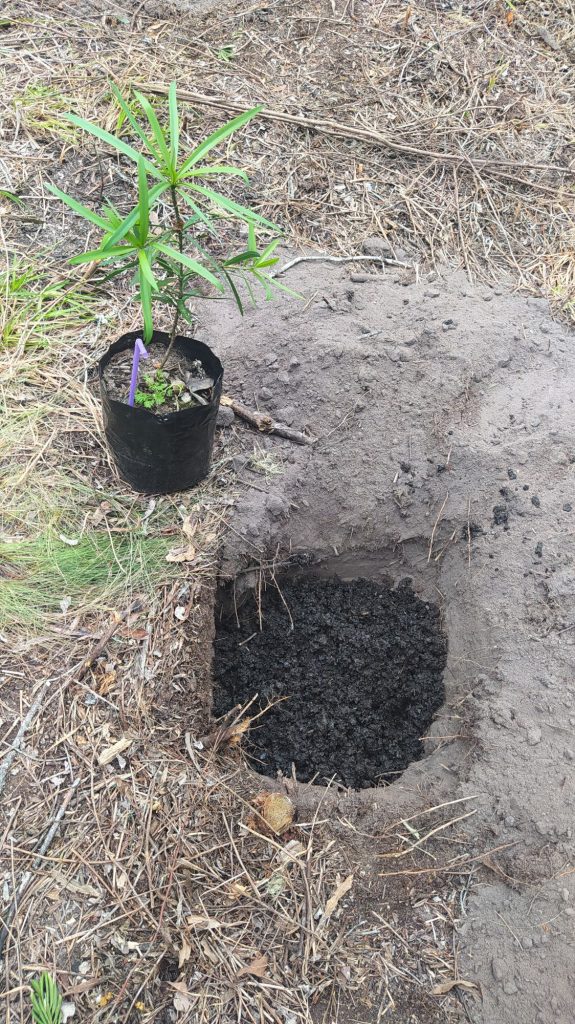
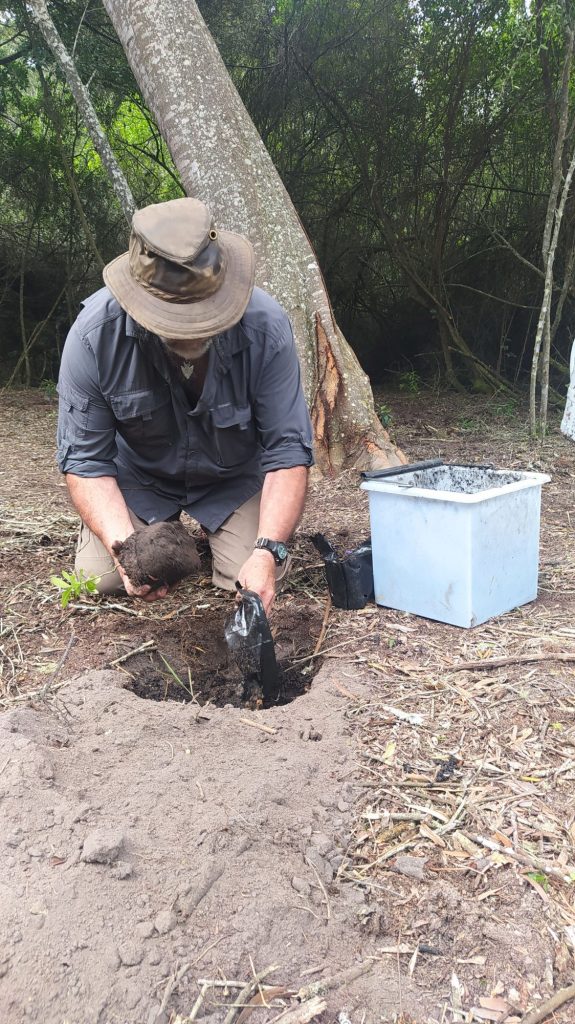
We’ll be comparing the rate of growth of the trees using biochar vs. those where biochar was not included in the mix. Watch this space!
Click here if you would like to GIFT A TREE OR visit www.payfast.co.za/donate/go/precioustreeproject to make a donation or sponsor a tree.
